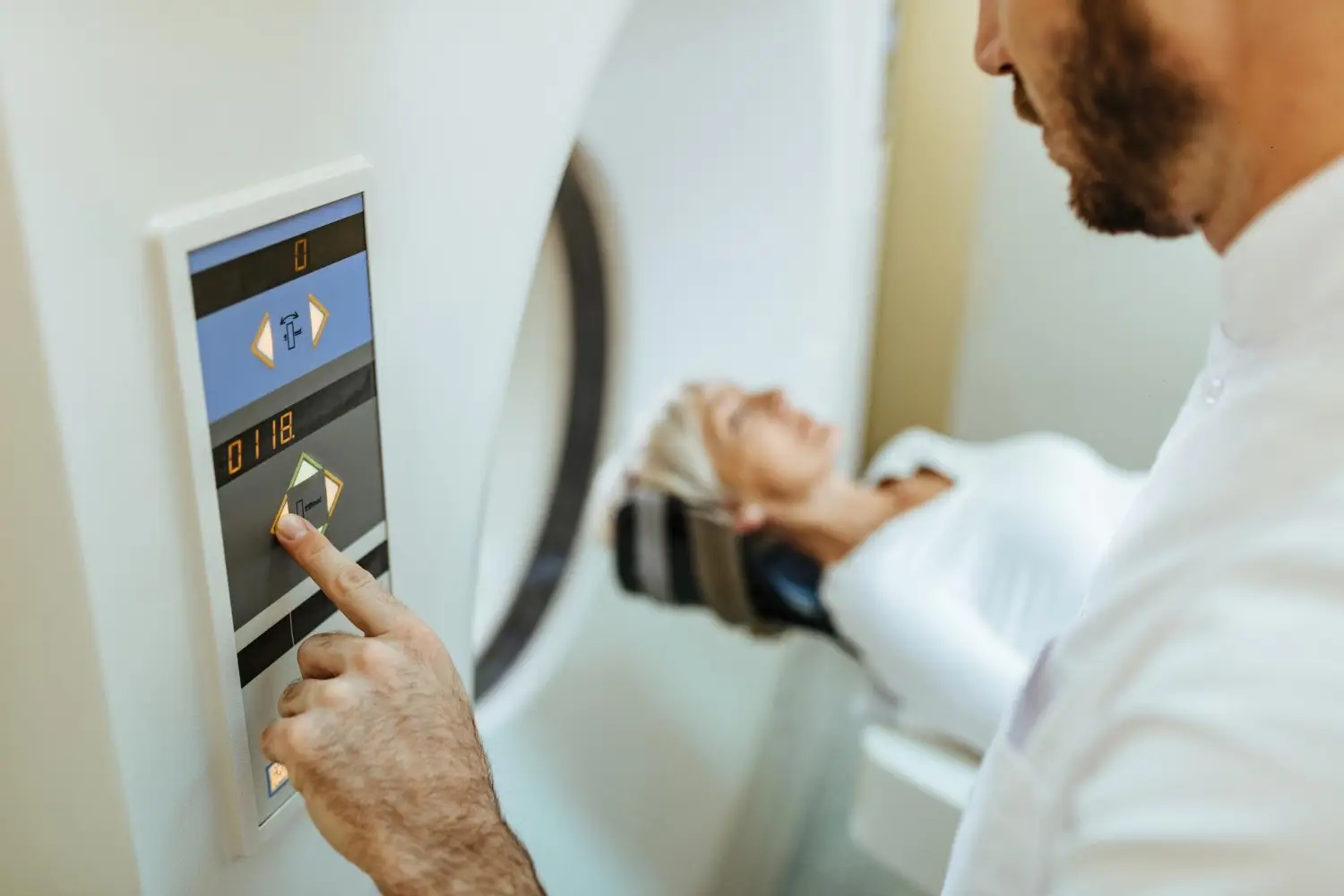
MRI brain image segmentation
The segmentation process of magnetic resonance imaging brain images (MRI) is an important procedure for both healthcare studies and clinical usage.
Several instances of these kinds of uses include the quantitative analysis of muscle volume, the diagnosis of diseases, computer-guided surgical procedures, surgical training, therapy evaluation, treatment planning, useful brain visualization, and the investigation of anatomical structure[1]. White matter (WM), grey matter (GM), and cerebrospinal fluid, or CSF, are three different kinds of cells in the brain that are of particular interest to researchers[2]. Modifications that occur in these cells, regardless of whether they affect the entire volume or within specific portions, are able to be applied to classify both biological procedures and illness entities. These modifications can be employed either globally or locally within the volume, as well as tumor tissues (including viable cancer, edematous, and necrotic cells). This can be done either by investigating a whole volume of cell or focusing on a specific location[3, 4].
In a general sense, MRI brain imaging segmentation refers to the process of dividing the image into constituent regions because every region exhibits similar feature characteristics with the other regions[5]. In simpler terms, it is the procedure of determining the kind of tissue for every single pixel or voxel in both 2D and 3D datasets based on data that is provided through MRI images as well as previous knowledge of the structure of the brain. These datasets can be either two-dimensional (2D) or three-dimensional (3D). Certain MRI sequences, such as the T1-weighted (T1) and T2-weighted (T2) sequences as well as the proton density (PD) sequence, can provide a wealth of data regarding the soft tissue of the brain. The data is provided in the form of a multispectral images, and each one has the potential to reveal distinctively diverse information regarding the subject's anatomy and the subject's intensity[6].
The manual segmentation of images of the brain is a potential, but it is a laborious process that is prone to human variability and takes a lot of time. As a consequence, it is essential to create techniques that are either partially automatic or fully-automatic in order to produce an even more accurate quantity of brain segmentation. Nevertheless, the procedure of automatically separating the different parts of the brain imaging is a challenging and difficult task. This level of complexity can be traced back to the image's fundamental features. Imaging of the brain include unusually complex features, which are made more difficult to interpret by artefacts introduced by the MRI scanner, such as noise, partial volume effects, and intensity inhomogeneities. This results in a range of different techniques for automating the segmentation of images of the brain, every single one of which applies a unique set of inductive principles[7]. Several instances of these strategies include classification-based techniques, region-based techniques, and boundary-based methods. The fuzz clustering-based techniques for segmentation are particularly useful among these algorithms. This is due to the fact that the majority of MRI images have ambiguous borders between different regions. In this setting, fuzzy clustering has demonstrated significant potential because of its innate capacity to deal with the features of data in this form[8]. Therefore, it should not come as a surprise that the fuzzy c-means (FCM) method is the technique that is utilized the most frequently in a wide variety of medical applications[9].
Throughout the history of the past thirty years, a multitude of strategies founded on the FCM algorithm have been offered as potential solutions to the challenges of brain image segmentation. Some of these studies focused on enhancing the effectiveness of FCM in segmenting brain volumes in order to limit the influence of MRI artefacts such as noisy and outliers[10, 11].
[1] A. Alrosan, W. Alomoush, N. Norwawi, M. Alswaitti, and S. N. Makhadmeh, "An improved artificial bee colony algorithm based on mean best-guided approach for continuous optimization problems and real brain MRI images segmentation," Neural Computing and Applications, vol. 33, no. 5, pp. 1671-1697, 2021.
[2] W. Alomoush, A. Alrosan, K. A. Ammar Almomani, O. A. Khashan, and A. Al-Nawasrah, "Spatial information of fuzzy clustering based mean best artificial bee colony algorithm for phantom brain image segmentation," International Journal of Electrical and Computer Engineering (IJECE), vol. 11, no. 5, pp. 4050-4058, 2021.
[3] M. Balafar, "Fuzzy C-mean based brain MRI segmentation algorithms," Artificial Intelligence Review, vol. 41, no. 3, pp. 441-449, 2014.
[4] A. Bose and K. Mali, "Fuzzy-based artificial bee colony optimization for gray image segmentation," Signal, Image and Video Processing, vol. 10, no. 6, pp. 1089-1096, 2016/09/01 2016, doi: 10.1007/s11760-016-0863-z.
[5] A. Alrosan, N. Norwawi, W. Ismail, and W. Alomoush, "Artificial bee colony based fuzzy clustering algorithms for MRI image segmentation," in International Conference on Advances in Computer Science and Electronics Engineering—CSEE, 2014, pp. 225-228.
[6] E. H. Houssein et al., "An improved opposition-based marine predators algorithm for global optimization and multilevel thresholding image segmentation," Knowledge-Based Systems, p. 107348, 2021.
[7] H. Abdellahoum, N. Mokhtari, A. Brahimi, and A. Boukra, "CSFCM: An improved fuzzy C-Means image segmentation algorithm using a cooperative approach," Expert Systems with Applications, vol. 166, p. 114063, 2021.
[8] W. Alomoush et al., "Fuzzy Clustering Algorithm Based on Improved Global Best-Guided Artificial Bee Colony with New Search Probability Model for Image Segmentation," Sensors, vol. 22, no. 22, p. 8956, 2022.
[9] A. Alrosan et al., "Automatic Data Clustering Based Mean Best Artificial Bee Colony Algorithm," CMC-COMPUTERS MATERIALS & CONTINUA, vol. 68, no. 2, pp. 1575-1593, 2021.
[10] W. Alomoush et al., "A Survey: Challenges of Image Segmentation Based Fuzzy C-Means Clustering Algorithm," Journal of Theoretical & Applied Information Technology, vol. 96, no. 16, 2018.
[11] W. Alomoush and A. Alrosan, "Metaheuristic Search-Based Fuzzy Clustering Algorithms," arXiv preprint arXiv:1802.08729, 2018.




